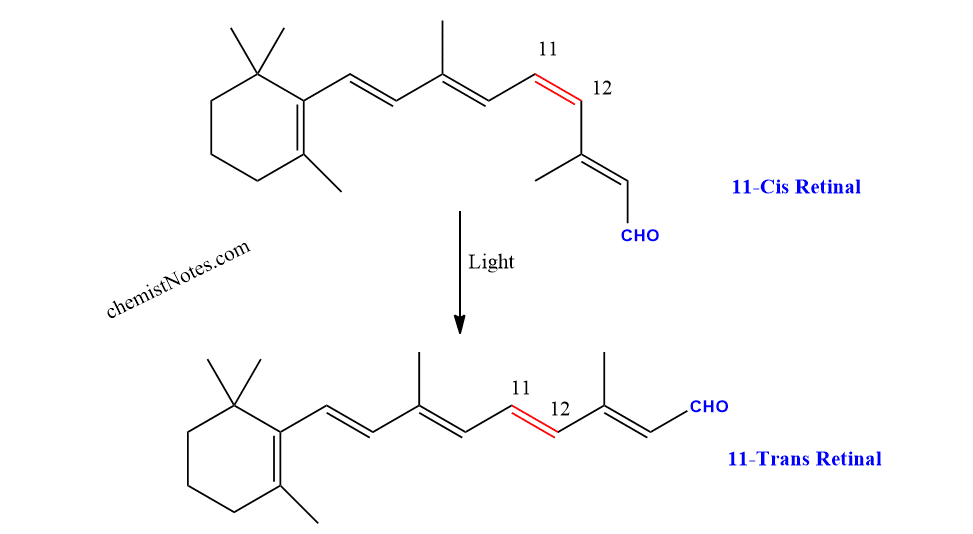Chemistry of vision is something beautiful that occurs in presence of light and human eyes can detect a very low amount of light absorbed by rod cells.
The retina of a mammal contains rod cells. In rod cells, a conjugated protein is present, known as rhodopsin. The rhodopsin has a prosthetic group called 11-cis retinal. Actually, 11-Cis retinal is an unsaturated aldehyde that is derived from Vitamin A. We know, that Vitamin A is derived from Beta-carotene pigment present in carrots and it is responsible for its yellow appearance.

The chemistry of vision
When light strikes the rhodopsin, the 11-Cis retinal of rhodopsin changes its configuration to 11- Trans retinal. Such transformation of one geometrical isomer into another is the beginning of the visual process.

Rhodopsin absorbs energy from light and using this energy carbon-carbon double bonds are opened which permits the rotation of C-C bonds for cis-trans isomerization. During such isomerization, the shape of the retinal is changed hence, the shape of the entire rhodopsin molecule is changed. Therefore, it is believed that a change in the shape of rhodopsin changes the permeability of membranes and permits the passage of Ca2+ ions which trigger off the nerve impulses to the brain.
In this way, vision is the final analysis that comes down to the detection of light. Therefore, vision is the matter of the physics of the eye and the biology of the brain. A series of enzyme-catalyzed reactions take place which provides energy to convert the trans-retinal back to the less stable cis isomer so that the process can start all over again.









